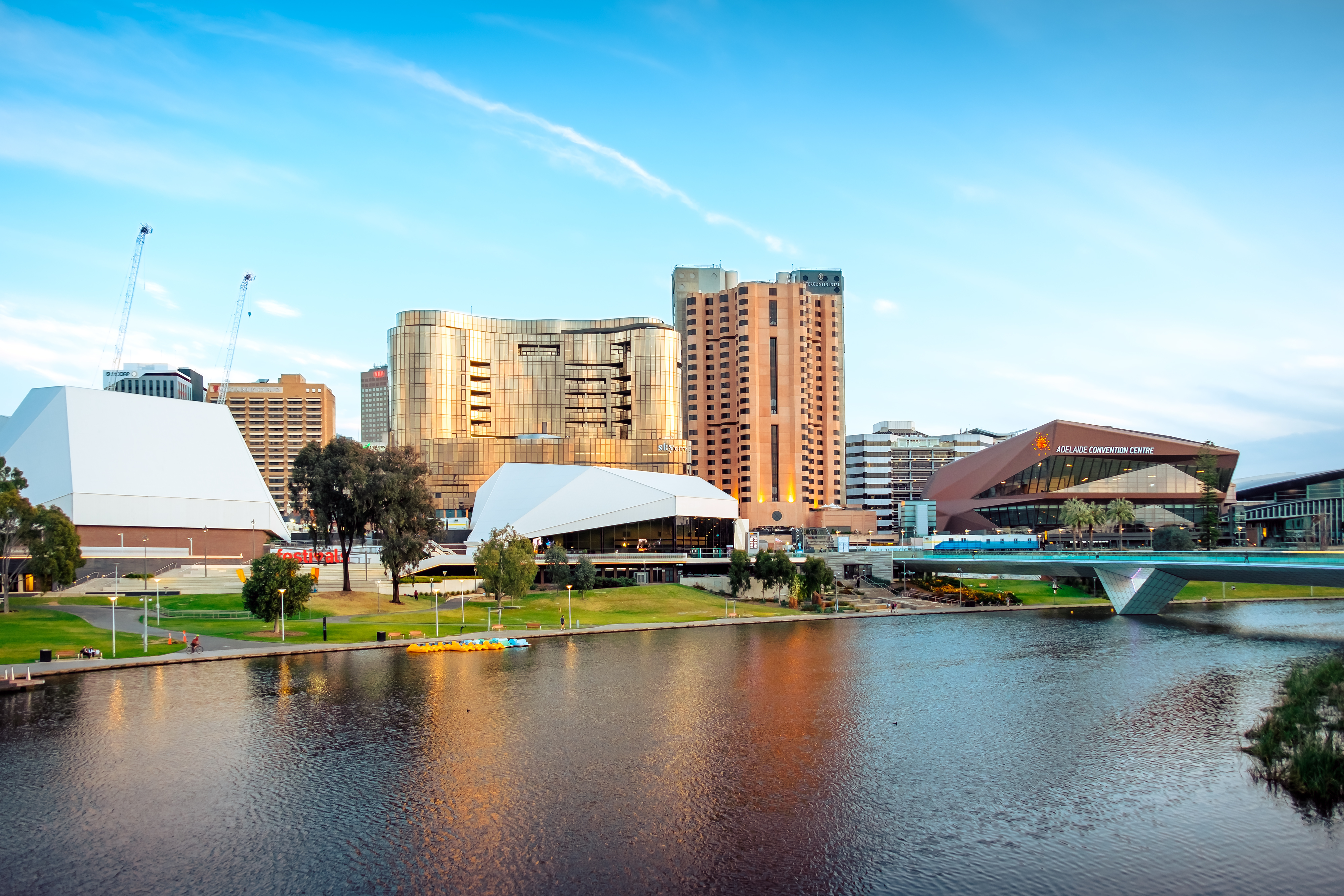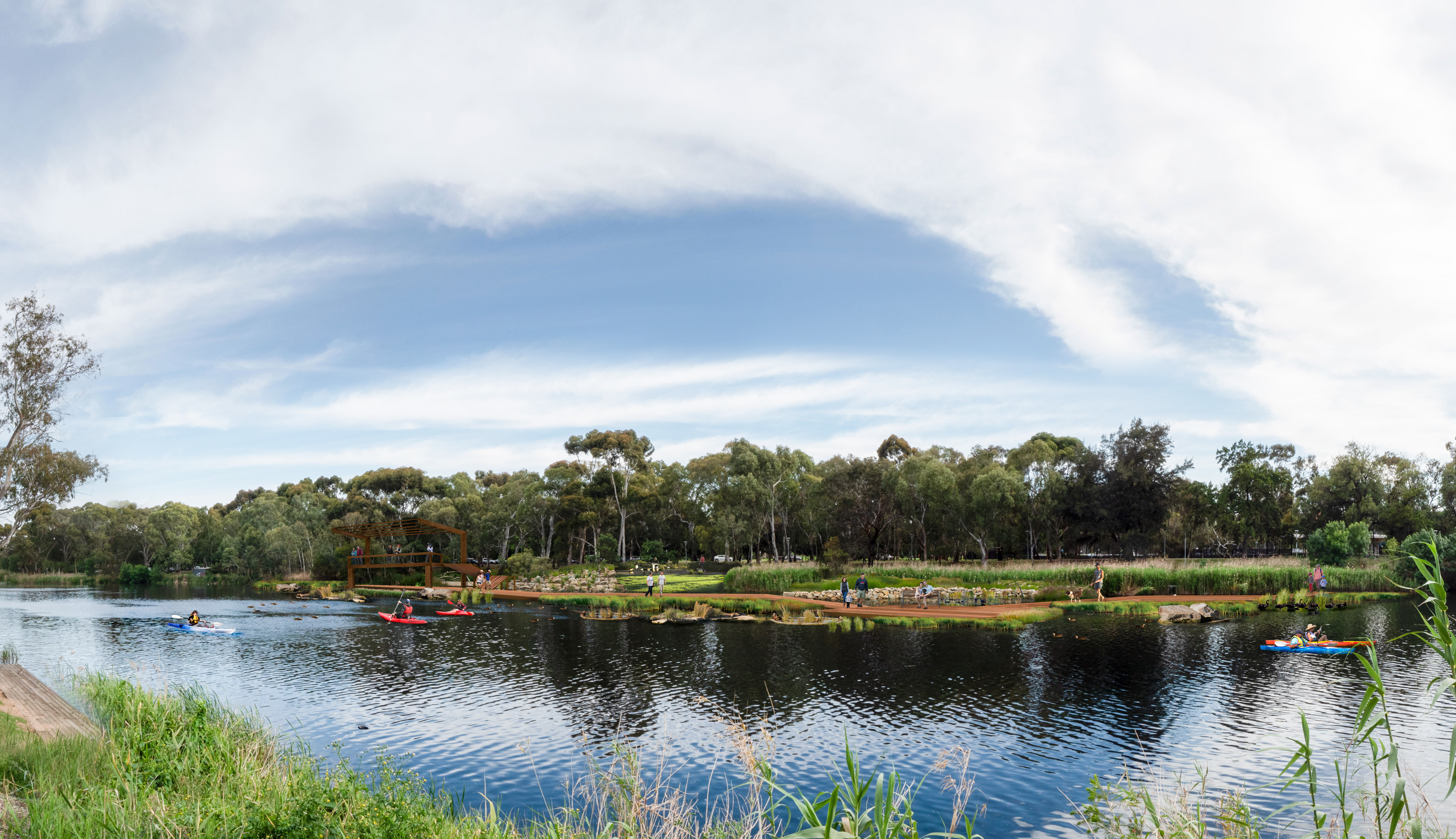Decades of effort has gone into creating a healthier River Torrens/Karrawirra Pari. Find out how the river has transformed over the last 20 years.

The River Torrens has been an incredibly important part of the culture and history of the Kaurna people for the last 45,000 years. In Kaurna language the River Torrens is called Karrawirra Pari which means Red Gum Forest River.
Originally in the summer, the river was a series of large waterholes and a key area for food and shelter for the Kaurna Meyunna (Kaurna people).
In 1836, when Europeans arrived, Adelaide was selected as the site for settlement because of the fresh water available from the river. Over time, the river gradually became polluted and neglected.
Over the last 20 years though, the river has been transformed into a healthier system. It’s now a top spot for locals and visitors to connect with nature.
Here’s everything you need to know about Adelaide’s River Torrens:
Where does the River Torrens start and finish?
The River Torrens is 85 kilometres long and is the main river in Adelaide, flowing down from the Mount Lofty Ranges near Mount Pleasant to the sea at West Beach.
To promote recreational use of the river in the CBD, Torrens Lake was created in 1881 with the construction of Torrens Weir. The lake is located in the heart of Adelaide city, between the weir and Frome Street Bridge and is now used for rowing, dragon boating and powerboat racing as well as for Adelaide’s iconic Popeye trips.

How’s the water quality of the river?
The water quality is much better.
Over the last couple of decades, the health of the River Torrens has been transformed by councils, government, Kaurna and the community working together.
The River Torrens Recovery Project is tackling stormwater management, weed control, revegetation, stabilising river banks, reducing litter and pollutants and removing large volumes of European carp.
European carp causes issues for native fish, irrigation and fishers as they reduce water quality. They stir up mud in search of food, making the water turbid and murky. Carp control in Torrens Lake is being carried out with a technique called electrofishing.
To help catch rubbish and stop it from entering the river, we use trash racks (also known as ‘gross pollutant traps’) along the river. Each year these trash racks collect enough leaves, twigs, sediment and rubbish to cover the playing field at Adelaide Oval.

Regular monitoring also helps us to keep an eye on the water quality of the river. This includes fish monitoring, where we collect, measure and record native fish species, and water flow data stations that record the flow along the river and the amount of sediment in the water.
Key projects creating a healthier Torrens
There are many other ways we are working to make the River Torrens healthier too.
St Peter’s Billabong, nestled in a bend of the Torrens 4.5km east of Adelaide has been getting a 30-year makeover. The Friends of the Billabong and local residents have volunteered their time to help restore and preserve this unique native habitat for everyone to enjoy.
It is now a thriving ecosystem and a popular place for families and friends to connect with nature.

Another key project to help revitalise the river is in Adelaide’s west where the Torrens meets the sea. The Breakout Creek redevelopment is steadily transforming this stretch of river from an artificial channel into a more natural flowing and healthy creek.

Stage 3 of the redevelopment is underway will create wetlands to capture and clean stormwater, remove weeds and plant native vegetation.
The redevelopment will also create an improved place to visit with new paths and river crossings, picnic areas, as well as viewing decks and places for learning about biodiversity and Kaurna Culture.
Green Adelaide’s Presiding Member Professor Chris Daniels and Team Leader Urban Water Dr Nadine Kelly shared their knowledge on the health of the Torrens on the lifestyle TV show Outdoors Indoors. Watch it below.
The segment was filmed at St Peter's Billabong, to the background melody of the banjo frogs, with their loud ‘bonking’ call that sounds like someone playing a banjo!
Along with all this work being done to help clean up the river, we are also leading a scoping study to bring platypus back to the Torrens.
Plus, the River Torrens in Adelaide’s CBD is set to be reinvigorated with more wetlands and plantings to create a cooler, greener and wilder attraction for locals and visitors. A series of wetlands will be created along a 3 kilometre section of the River Torrens in the CBD between the Torrens Weir and Hackney Bridge.

What can you do to help?
Here’s 5 key things that you can do to help Adelaide’s much-loved Torrens:
- Keep your run-off surfaces such as paved areas, roofs and concrete driveways and paths free of pollutants like fertilisers, pesticides, oil, petrol and dog poo, so it doesn’t enter Adelaide’s stormwater systems.
- Wash your car on the grass.
- Make sure you bin any litter so it doesn’t get caught in stormwater, which flows directly into the nearest creek without being treated first.
- Explore and adopt water-sensitive urban design in your home to reduce stormwater runoff. For example create a rainwater garden or choose permeable paving (which allows water to soak through) on your driveway and footpaths instead of concrete paths.
- Join a local Friends of Parks or volunteer group such as Friends of the Billabong (St Peters) to get your hands dirty to support the health of the Torrens.